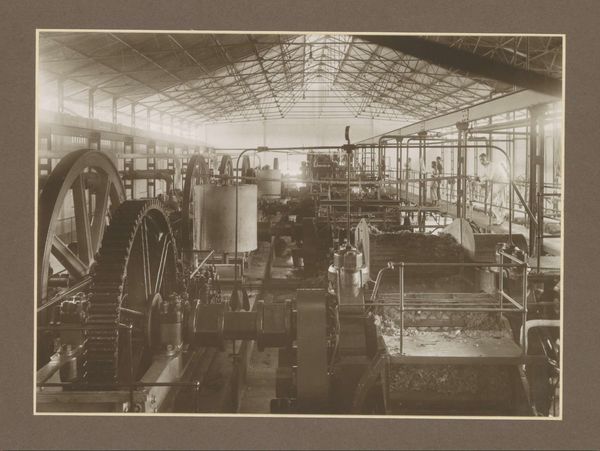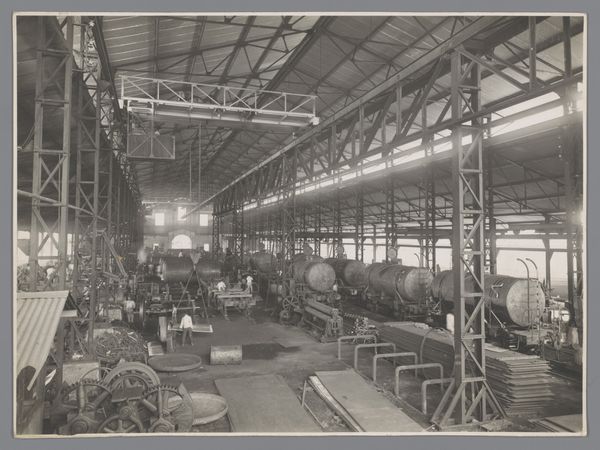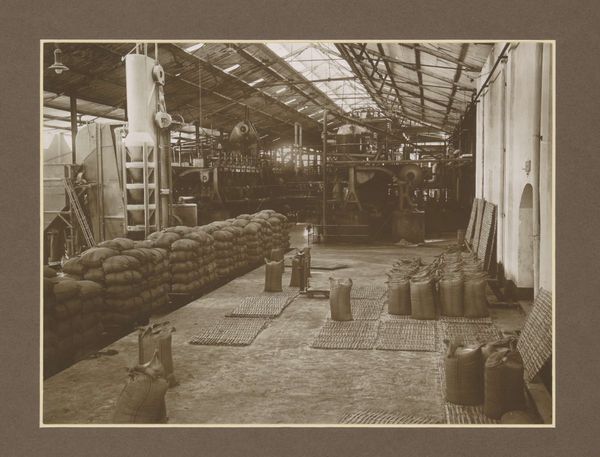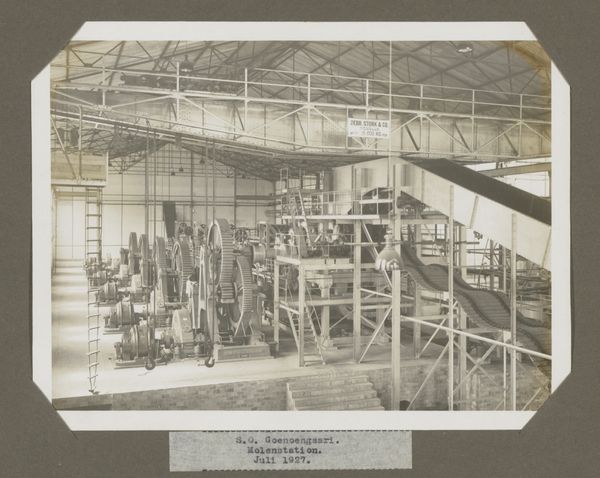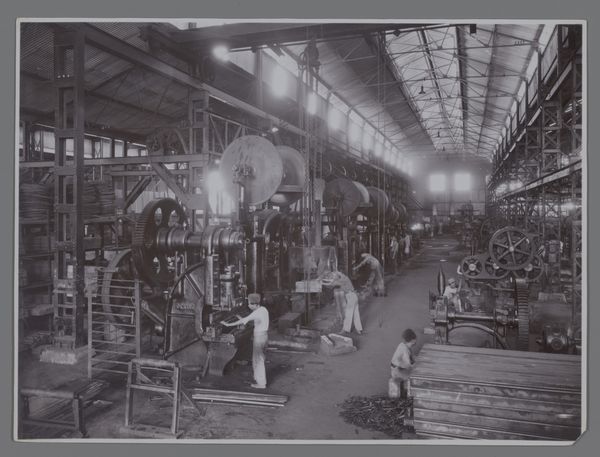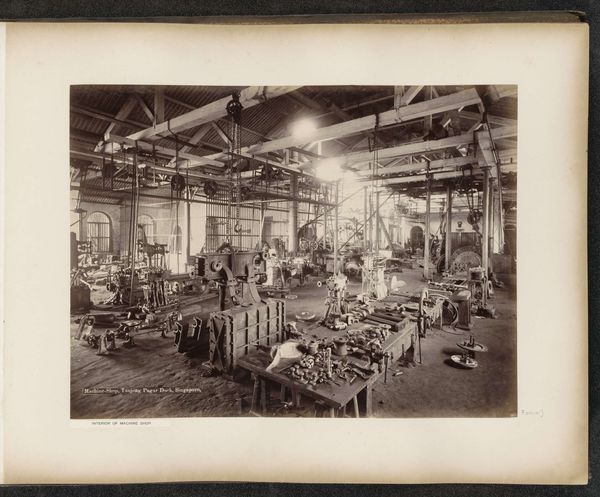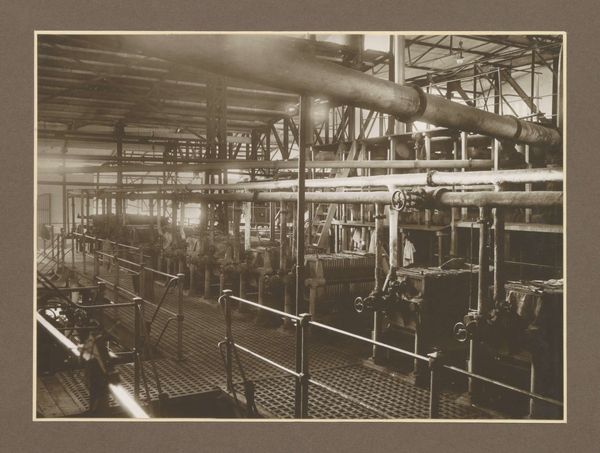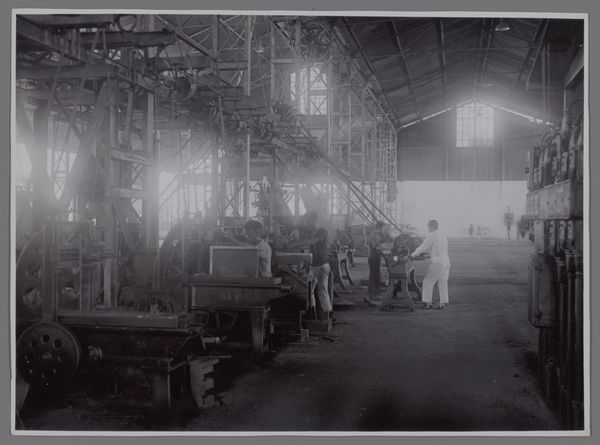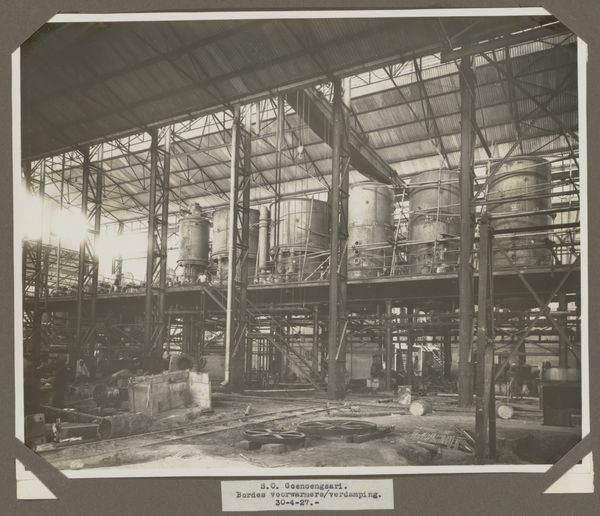
photography
#
landscape
#
photography
#
geometric
#
realism
Dimensions: height 297 mm, width 450 mm
Copyright: Rijks Museum: Open Domain
Editor: We are looking at an image entitled "Centrifugehuis en zakken in suikerfabriek Goedo te Djombang op Java" which translates roughly to "Centrifuge House and Bags in the Goedo Sugar Factory in Djombang, Java", created around 1925-1930, presumably a photograph by Isken. It’s a striking view of a sugar factory, and what really grabs me is the starkness and industrial scale. What stands out to you? Curator: What immediately strikes me is the image's complex intersection of industry, colonialism, and visual representation. Think about Java during this period: it was part of the Dutch East Indies. How does the photograph itself participate in the colonial gaze and document the exploitation of resources and labor? Editor: I hadn’t considered that aspect. So, you’re saying the photograph might not just be a neutral record, but could be interpreted as a statement of colonial power? Curator: Exactly. Notice the composition. The geometric structures, the precise arrangement of bags, and even the controlled lighting seem to emphasize order and efficiency. Isn't this also about claiming dominance and control? It shows us an idealized image of production rather than individual human stories. How might its display in a Western museum reinforce that power dynamic? Editor: That makes sense. It does feel like we're seeing the result of production without any trace of human presence really. I wonder who the intended audience was and where these photos were usually exhibited? Curator: A very interesting and valid question, since, depending on its use, the context around the image varies. Understanding its public role is essential. Where might this image have circulated and whose views did it shape? This photo’s politics are linked to who gets to look, and what stories they take away from it. Editor: I see what you mean now. This image, at first appearing like a simple record of a factory, opens a window into much larger and complex societal structure! Curator: Indeed. By acknowledging these interwoven forces, we begin to comprehend the deeper public role that an artwork such as this truly occupies.
Comments
No comments
Be the first to comment and join the conversation on the ultimate creative platform.
